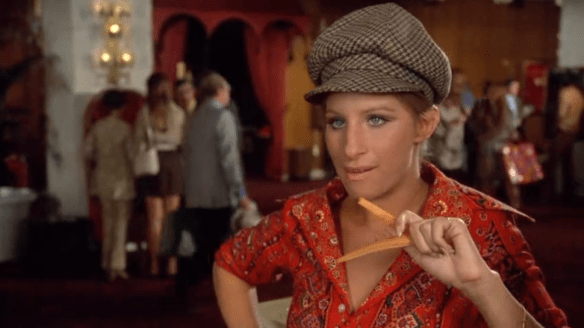Recently TCM released their podcast The Plot Thickens featuring interviews with Peter Bogdanovich. He’s always been an intriguing figure of the movies, and part of this is how he’s been able to cultivate his image while also acting as a living bridge to Classic Hollywood.
He was part of the New Hollywood Cinema of the 1970s, but certainly associated and befriended some of the giants of the past from Orson Welles and Howard Hawks to Alfred Hitchcock and Cary Grant.
What’s unprecedented is his knowledge and his openness to share in interviews, regaling audiences with his stories. He really is a raconteur blending the talents of an actor, director, and film critic.
Recently I watched two of his earliest projects: The Wild Angels (1966) and Targets (1968) with Roger Corman, along with his documentary Directed by John Ford.
I also pored over some of his other interviews including spots on The Dick Cavett Show and contemporary retrospectives. There is some general overlap, but he always seems ready with a new recollection to keep the old masters alive for the present generations.
Here’s Some of What I Learned:

Cybil Sheppard in The Last Picture Show
-His father was a painter who grew up with silent pictures and gave young Peter an appreciation for the greats: Keaton, Chaplin, and Lloyd
-Bogdanovich started out at the Actor’s Studio working under Stella Adler at the age of 16! He lied about his age to allowed to study there
-When he was barely 20, he put on his own stage version of Clifford Odets’s The Big Knife starring Carroll O’Connor
-He started keeping film reviews on index cards around the age of 12 starting in 1952 all the way until 1970. One of his first reviews was on Howard Hawks’ Monkey Business (1952).
-The Monographs he wrote for the MoMA on Orson Welles (1961), Howard Hawks (1962), and Alfred Hitchcock (1963) led to in-depth interviews with each director and a reappraisal of their careers.
-At a screening of Bay of Angels (1963) in Los Angeles, he met Roger Corman who knew Peter’s writing and enlisted him to work on The Wild Angels (1966). The success led to his directorial debut Targets (1968).
-He met a young Frank Marshall at a birthday party for John Ford’s daughter. It would instigate a lifelong collaboration alongside his first wife Polly Platt.
-His competitive spirit meant he felt like he was a failure for not making his first film at the age of 25 like his hero and friend Orson Welles (who made Citizen Kane). Coincidentally, The Last Picture Show was hailed by some as the most important film by a young director since Kane.
-Most importantly, he wears bandanas, not ascots.
Recollections Rehashed:

Barbra Streisand in What’s Up, Doc?
-Frank Capra told him film always has a habit of slowing time down so you have to speed it up to make it feel natural. If you want to make it feel really fast, you have to speed it up even more
-Cary Grant told him Jimmy Stewart was doing the same stuttering, mumbling persona years before Marlon Brando ever got around to it
-He stole from Howard Hawks’ Bringing up Baby for What’s Up, Doc? because Hawks told him all the great directors stole from other people
-Hawks’ favorite directors were the ones you know who the devil made the movie because they have a personal style unique to the creator
-Jimmy Stewart famously told him if you’re lucky and God helps you, what actors have the opportunity to do is give audiences little bits and pieces of time that they can cherish forever.
